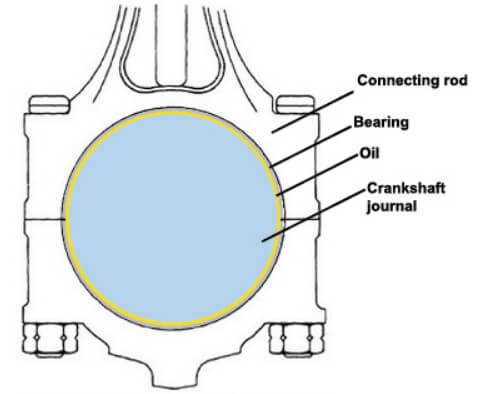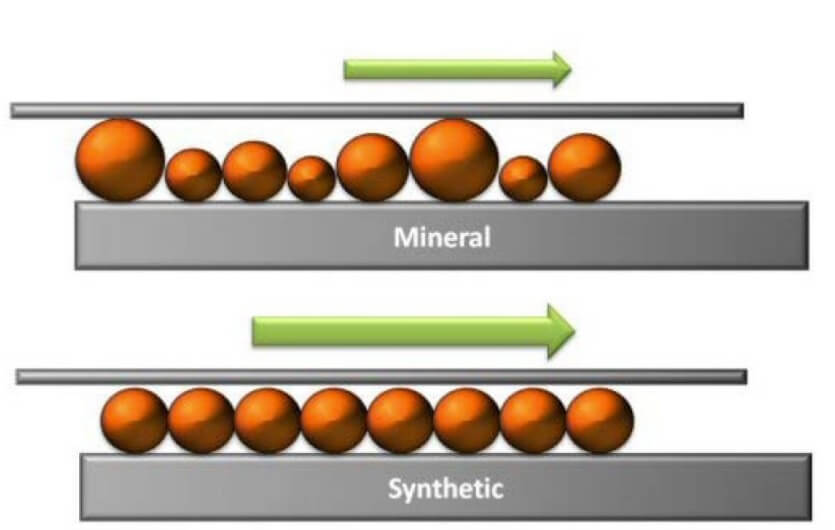What’s the best motor oil to use
How to choose the best motor oil for your vehicle
You’ll see lots of claims synthetic oil is the best motor oil for your engine. But it costs more, and if synthetic motor oil isn’t specified by the carmaker, do you really need to spend the extra money? I’ll give you the pros and cons of each to help you decide what’s the best motor oil for your vehicle.
This article is just one in a series. If you’d like to know more about oil click on the links below.
Synthetic motor oil versus convention motor oil
Lots of choices when it comes to motor oil
Picking the right oil, filter, and service interval has never been more challenging. Because even if you follow the motor oil type and viscosity recommendations shown in your owner’s manual, you still have at least a dozen oil formulations to choose from. And oil filters come in just as many flavors. You can buy an expensive $14 filter with the highest dirt holding specifications and the longest mileage rating, or you can buy an oil filter for around $4. On the other hand, picking the correct oil has never been this easy. In fact, the correct oil type, viscosity and rating is listed right in your owner’s manual.
What motor oil does
• Job #1 Separate parts and reduce friction
Motor oil’s main job is to create a thin cushioning film to separate metal  components and prevent metal-to-metal contact as the parts rotate and bang against one another.
components and prevent metal-to-metal contact as the parts rotate and bang against one another.
The oil pump continually forces motor oil into the small gap between moving parts to provide a cushion.
Inside the combustion chamber, the oil film acts as a sealant to close the gap between the piston rings and the cylinder wall. That constant sliding, pounding, and shearing friction creates heat. So oil’s second job is to carry away the heat of friction and cool metal parts.
• Job #2 Remove heat
As engine parts rotate in the oil cushion it creates heat from molecular friction. As replacement oil is pushed into the bearing clearances, the heated oil carries away frictional heat. This is one reason why it’s never a good idea to use a higher than recommended viscosity oil — because the thicker oil doesn’t flow as fast and can’t move heat as quickly out of bearing areas. Worse yet, since the thicker oil doesn’t move as fast, molecular friction actually causes more heat. So you’ve create a double threat; oil that creates more heat but can’t flow as quickly to remove the heat. Result? Additional engine wear and greater thermal breakdown of the oil.
• Job #3 Clean
Motor oil has to clean the engine and carry dust, dirt, combustion byproducts (soot and acid), and the remnants of degraded oil off to the filter to be captured. In addition, oil must neutralize acids, prevent metal from corroding, and prevent foaming as whirling parts whip air into it. Anti-oxidants additives work to prevent oil breakdown.
A 5W-20 mineral type oil is really a 5-weight oil with many different sized molecules. The manufacturer blends in a polymeric viscosity improver (VI) additive that uncoils and expands when hot to thicken the oil. So the 5-weight oil behaves like a 20-weight oil when hot. Unfortunately, VI additives break apart under the shearing conditions found in engines.
What is synthetic motor oil?
Synthetic can be made from natural gas or highly refined crude oil, depending on the market prices for natural gas and the manufacturer’s capabilities. Synthetic oil is built for uniform molecule size so it pumps easier and faster when cold, creates less heat from friction and resists thermal breakdown. Imagine sliding your hand across the ball bearings in each photo below and you can see why synthetic oil flows better. The uniform molecules simply offer less resistance. And the uniform size also helps it maintain a strong film cushion when hot.

Generally speaking synthetic oil also contains higher quality additives
Using the correct motor oil viscosity is really important
Oil does all these things. But first it has to circulate. To do that, it must flow well. And that’s where things get complicated. Thin oil (5-weight) pumps well when cold. But it thins out when hot, making it harder to maintain a cushioning film. Thicker oil (30-weight), on the other hand, maintains a strong cushioning film that doesn’t thin when hot. But it’s almost impossible to pump when cold.
To get the best of both worlds, car makers specify a multi-viscosity oil (5W-30 for example). It’s thin and pumps when cold, but thickens as it heats up. Engineers know exactly what viscosity range is best suited for any particular engine.
To make a conventional 10W-30 multi-viscosity motor oil refiners use a 10-weight base oil. Then they add Viscosity Modifiers (VM) to make the 10-weight oil behave like a 30-weight oil when hot. There are other ways to build a multi-viscosity oil, but I’m keep this as simple as possible.
A multi-viscosity 10W-30 synthetic oil, on the other hand can be made from 20-weight oil that flows like 10-weight oil when cold and behaves like a 30-weight motor oil when hot. Each oil manufacturer has their own recipe to achieve multi-viscosity performance. This is just one example.
No matter which type or brand you choose, keep in mind that VM additives break down under shear and heat loads. So hauling a heavy load will breakdown your oil faster than dropping off the kids at school.
Viscosity Index is another factor you should consider.
In addition to doing all those things, motor oil also regulates valve timing. That’s right. If your engine has variable valve timing (VVT), the camshafts advance or retard using varying oil pressure in the cam phasers. Use the wrong viscosity oil and you can AFFECT cam timing and set a check engine light. And, if your engine has direct gasoline injection, using the wrong oil can damage the camshaft and high pressure fuel pump.
So what’s the best motor oil for YOUR engine?
If carmaker calls for synthetic oil, that’s what you should use. Period. That was simple. Now comes the complicated part; should you use synthetic oil in an engine that doesn’t require it?
Here are the pros for synthetic oil:
Synthetic oil has more and better cleaning and anti-wear additives. If you change your oil according the carmakers’ recommendations, synthetic oil will keep your engine cleaner, result in less wear and make your engine last longer, so it’s really the best motor oil on this point alone.
Synthetic oil flows faster when the engine is cold, so you cut down on cold start wear.
Synthetic oil resists thermal breakdown much better than conventional mineral oil. So your oil maintains its best properties over the life of the oil.
Here are the cons of synthetic oil:
It costs more. If you do your own oil changes and buy oil from a big box store like WalMart, you’ll pay about $2 more per quart more than conventional oil. But if have your oil changes done at a shop, synthetic oil will double the price of each oil change.
You have to maintain the same oil change intervals. Uninformed know-it-alls will tell you that you can go longer between oil changes if you use synthetic oil. That’s NOT necessarily true. Your oil change intervals are determined by HOW you drive as well as the number of miles. Lots of short cold start trips in stop and go traffic deplete conventional and synthetic oil at the same rate. Yes, synthetic oil has a bit more of these additives, but not double. So switching to synthetic oil for an engine that doesn’t require it simply costs more. Period.
Should you switch to synthetic oil?
If you want better lubrication on cold starts, less engine wear and a cleaner engine, and you’re willing to pay more, synthetic oil is simply the best motor oil.
Always follow the manufacturer’s viscosity recommendation
Aside from neglect, using the wrong oil viscosity is the single most common cause of premature engine wear. And most of that wear occurs during cold starts. What’s considered a cold start? If your vehicle hasn’t run for three or more hours, it’s cold—even if you live in Arizona!
The car maker’s recommendations are in your owner’s manual or right on the oil filler cap. Never second-guess the car maker’s recommendations. NEVER
© 2012 Rick Muscoplat
Posted on by Rick Muscoplat